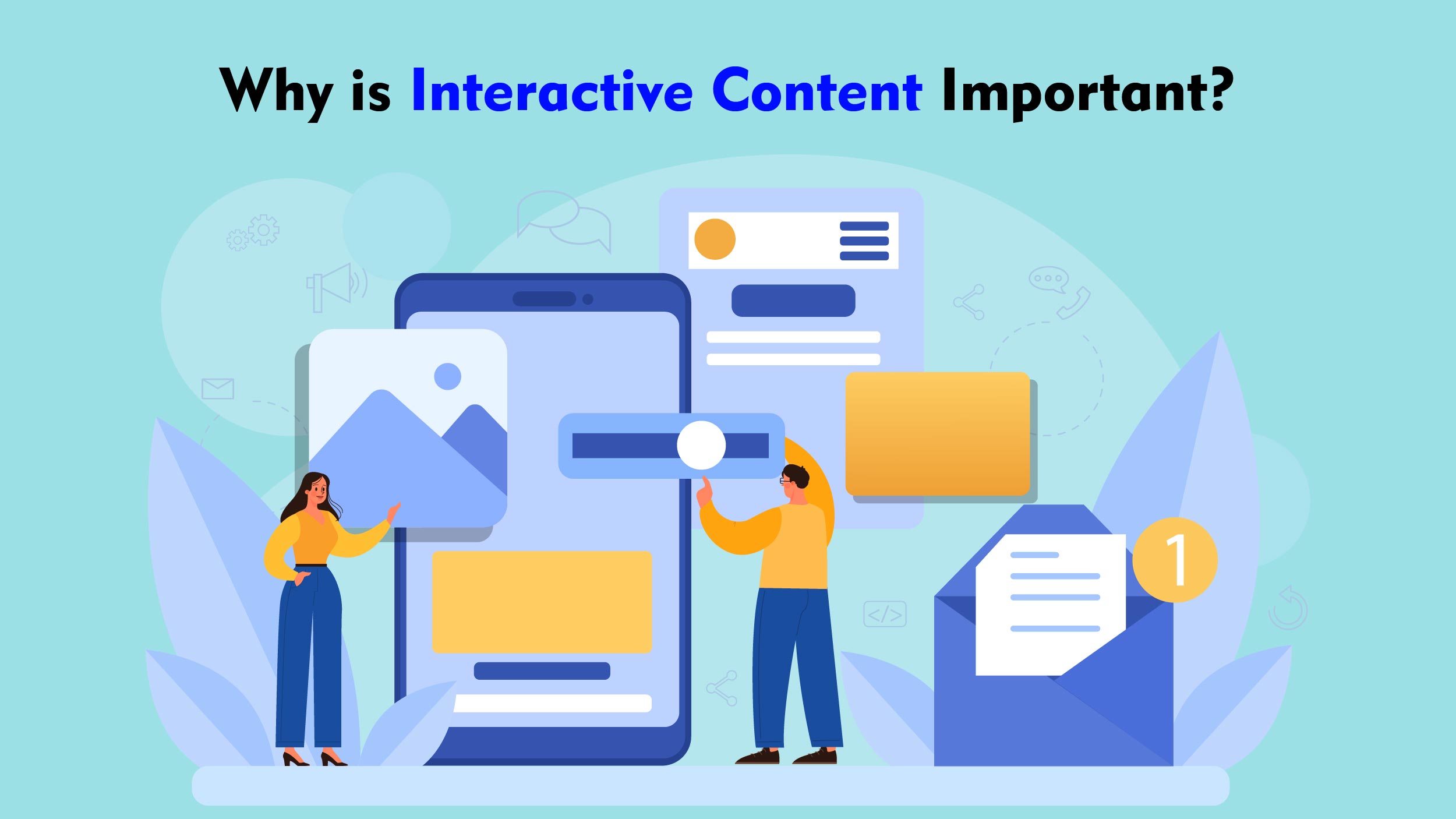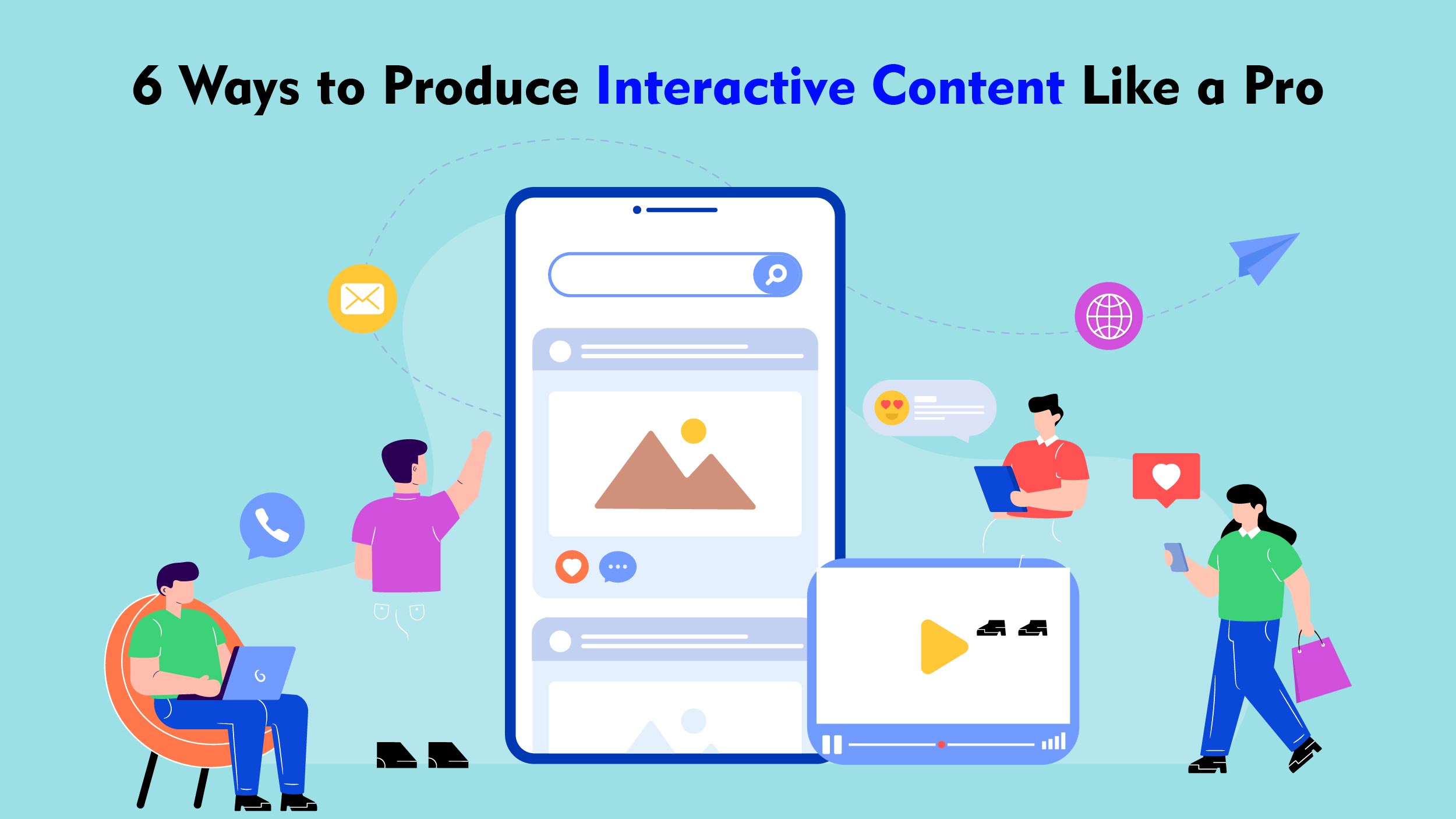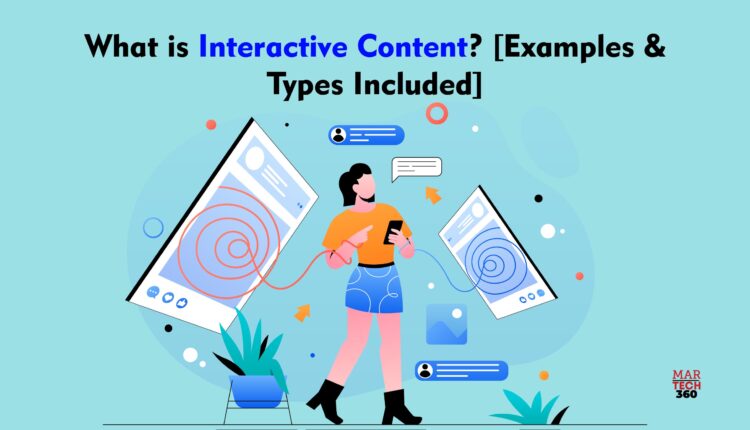Have you ever taken a quiz or poll to discover which fictional character you resemble from a story or movie?
If you said yes, then you have used interactive content. These are addictive, fun, and engaging content that attracts audiences.
This type of content has become effective for brands compared to traditional advertising.
Earlier, content marketing focused on static materials like ebooks and blog posts. But, interactive content has emerged as a powerful tool to captivate audiences and drive results.
Let’s delve in and understand everything about it.
What is Interactive Content?
Interactive content refers to any content that encourages user participation, shifting the content experience from passive consumption to active engagement. The rise of the internet, along with the popularity of blogs and social networks, has propelled media interactivity forward.
Brands have adapted to involve consumers in their content creation process.
Previously, content marketing largely relied on passive consumption. Brands would publish content and await user feedback, such as likes, comments, shares, or website browsing behavior analysis.
While this was already more interactive than traditional offline marketing or early internet days, brands saw the potential for more.
Interactive content emerged as a solution, offering a more engaging and enjoyable experience for consumers inundated with online content. A great example of this is how Netflix introduced Bandersnatch encouraging viewers to choose the fate of the characters.
This type of content requires users to engage with it to access information, offering a more appealing alternative to simply reading text.
Why is Interactive Content Important?

As the popular saying goes, “content is king.” This saying has been proven for more than a decade. More than half of your website visitors spend 15 seconds or less reading your articles.
People are no longer interested in reading; they just skip through to see if the content is worthy enough of being read. This is exactly why your brand should integrate this type of content as a marketing tool.
Consumers are encouraged to compete, compare, test themselves, ingest information more quickly, and get benefits quicker. Furthermore, it may be very immersive. For example, interactive video creates a unique user experience by connecting the dots between traditional video and artificial intelligence.
Some of the best examples of interactive content tools include Ion Interactive, Contentools, SurveyMonkey, Thinglink, and many more.
Also Read: Understanding Interactive Content And How Useful It Is To Increase Customer Engagement
What are the Benefits of Interactive Content?
- Enhancing User Experience: It combines information with entertainment, engaging users in a dynamic experience. Unlike static materials like ebooks or blog posts, interactive content captivates attention and encourages active participation. Particularly appealing to millennials, who crave innovation and challenges, this type of content provides a more stimulating and enjoyable user experience.
- Increasing Engagement: It offers a solution to combating content saturation in today’s marketing landscape. By providing a refreshing alternative to passive content, interactive formats boost engagement rates and deepen user involvement with brands. Features like interactive infographics surprise users with novel ways to consume information, leading to increased sharing and referral traffic.
- Gathering valuable feedback: It enables brands to collect rich feedback data from users. Through real-time tracking of user interactions, brands can gauge content consumption, identify exit points, and gain insights into user behaviors and preferences. This data-driven approach enhances content measurement and optimization, ultimately improving marketing strategies.
- Optimizing Lead Generation and Conversion Rates: This type of content not only drives engagement but also translates into tangible results in lead generation, sales, and revenue. By offering visually appealing and immersive experiences, interactive content stimulates consumer desire and guides them along the conversion journey. Tools for creating content facilitate conversion optimization and enable A/B testing to refine strategies and maximize results.
6 Ways to Produce Interactive Content Like a Pro

- Start with Understanding Your Audience: Crafting detailed buyer personas to understand your audience’s behaviors, pains, and needs. Tailor your content production to resonate with your target audience, ensuring relevance and engagement.
- Repurpose Existing Content: Leverage the content you already have by repurposing it into interactive formats. Transform engaging materials, such as ebooks, into interactive pages enriched with quizzes or calculators to provide a fresh and engaging experience for your audience.
- Align Content with Funnel Stages: Map out your content strategy to align with different stages of the buyer’s journey. Tailor content types to specific funnel stages, offering visually appealing lookbooks to attract attention at the top of the funnel and interactive calculators to demonstrate financial benefits at the bottom.
- Ensure Responsive Layouts: Prioritize responsive design to ensure an optimal user experience across all devices. With the prevalence of mobile usage, interactive elements must function seamlessly on various screen sizes to maximize engagement.
- Harness Data for Optimization: Utilize the data collected to gain valuable insights and optimize marketing strategies. Analyze user interactions to understand consumer behavior, refine segmentation for targeted campaigns, and personalize marketing approaches to enhance engagement and drive conversions.
- Capture Visitor Contact Information: Seize the opportunity to gather visitor contact data. Offer incentives such as access to quiz answers or personalized recommendations in exchange for contact details, enabling you to nurture leads effectively through the sales funnel. Communicate the benefits of providing contact information to encourage participation and data collection.
Types of Interactive Content
- Quizzes: Quizzes have gained immense popularity online, thanks to platforms like Buzzfeed. They offer a fun and interactive way to engage and entertain audiences while providing insights into their knowledge and interests. Creative and relevant quizzes have the potential to go viral, making them a valuable tool for brands.
- Calculators: Calculators serve as interactive tools to demonstrate how a product can positively impact a customer’s budget. Whether showcasing potential savings, earnings, or financial planning, calculators complement the value proposition of a product by illustrating its practical benefits.
- Ebooks: Elevate traditional PDF ebooks by adding interactive elements such as videos, images, graphics, and animations. By enhancing ebook content’s visual appeal and interactivity, audience engagement and enjoyment are significantly heightened.
- Infographics: Infographics effectively convey data and information in a visually appealing format. By integrating interactive features, readers can actively engage with the content, enhancing their understanding and retention of key points.
- White Papers: White papers offer in-depth technical content, serving as comprehensive guides or manuals for executing strategies or actions. Their informative nature and straightforward presentation make them valuable resources for readers seeking detailed insights.
- Landing Pages: Landing pages are designed to drive conversions by encouraging visitors to take specific actions. Incorporating interactive elements into landing pages can captivate visitors’ attention and motivate them to provide their contact details, thereby converting them into leads.
- Lookbooks: Traditionally static in PDF format, lookbooks showcase products through visually appealing photographs. Transforming lookbooks into interactive experiences enhances their attractiveness and engagement potential across various niches.
- Questionnaires: Questionnaires offer a more serious and in-depth approach than quizzes, aiming to assist consumers throughout their journey. From identifying needs at the beginning to recommending solutions at the end, questionnaires collect valuable data to inform marketing and sales strategies tailored to the consumer’s stage in the journey.
Final Thoughts on Interactive Content
Now that you understand the importance of interactive content and how to get started making it, remember that it can make your posts different from your competitors. There are so many blogs and ebooks out there flooding people with information, but this type of content grabs attention in a unique and engaging way.


Comments are closed.